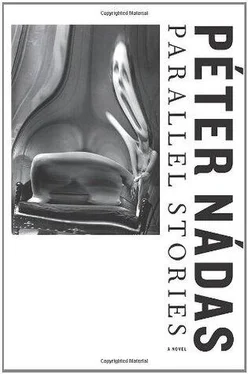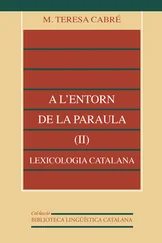Slowly it was growing lighter, though falling snowflakes were still visible in the beams of distant streetlights. As if in the young man’s grip he had felt both a terrific strength and an insane trembling that the hand’s owner could not reconcile. He had to think that the young man might be a drug addict, his periodically recurring need accounting for why his facial features were so nervously, prematurely old and used up.
He could still see the thin figure in the snowfall among the trees.
Hopeless, he said to himself, though he couldn’t have said to whom or what he was referring.
As if his fate had been to have this hopelessness added to another hopeless case. For this he could thank the coincidence that he had not been relieved on his shift. And as if the approaching Christmas holiday served only as a means to deepen the complications. Yet in fact, in this new case, Kienast needed only to deal with two primitive matters: to determine the unknown person’s identity, and to exclude the possibility that the death was a suicide. He could see that the case would be simple, yet that he wouldn’t be able to solve it to his own satisfaction. This boy would somehow mess him up. His other hopeless case was more exciting; he had been at it for more than two months — a patricide in which the wife took the blame for the child who had been regularly having intercourse with the father.
After his night shifts, Kienast often felt dejection followed by a justified anxiety. His natural laziness sought this sort of excuse or explanation. He was like a large canine that loves softness, warmth, and comfort.
It took a long time to identify the corpse, especially since no one came looking for it, not even after the holidays.
Before it was put on ice, it went through only the first, most necessary coroner’s examination. The forensic technicians searched through the corpse’s belongings. They found nothing on the body or in the clothing to indicate violence. Most likely a heart attack had finished him off on that park bench.
Kienast noted, however, that no article of the corpse’s clothes had labels. In cases where personal identification is difficult, these labels can be very helpful. One should look for them almost automatically. Overcoats and jackets are to be turned inside out; the labels are there, sewn into the lining. In shirts and sweaters, they are on the collars, in pants on the inside of the belt band. In socks and underwear they may be embroidered or woven; in cheaper merchandise they are printed in bright colors. Often these labels are of more use than the so-called bertillonage , those eleven items of physical measurement and characteristics that must be recorded to make a positive identification but that are useless for anything else and find themselves at the bottom of desk drawers or in unused databases. This dead man did not wear cheap clothing. Dr. Kienast, examining the third or fourth item, with gloved hands lifted them carefully out of their marked plastic bags. When he found no trace of any labels, in his surprise he hissed involuntarily.
He was alone in the large room; his lonely hissing echoed within the empty tiled walls.
Well, all right, it’s possible that a person finds these labels offensively colorful, or they irritate the skin, or one simply does not feel like being labeled and one removes them. It’s also acceptable to get rid of them on one’s shirt and pullover because, let’s say, they irritate one’s neck; but why in hell would anyone peel them off the inside of the pants’ waistband, where they can’t be seen or felt. A mania; but what could be the sense or significance of such a mania. As if he were angry at the living person whose corpse was lying before him.
What maniac would get rid of every possible mark on his clothing that might be used for identification. Other people do not even notice labels, or they like them because they are proud of the brands they wear. His mind automatically supplied the answer: persecution mania, compulsive self-concealment, justified or unjustified anxiety, a desire to leave no traces behind. He gazed at the corpse, he gazed at its belongings.
At the shockingly small underpants, made of translucent, shiny, almost glittering material, where he found a large stain of sperm. Whatever else, he had been a man who liked the color blue; everything he wore was blue — light blue or dark blue.
A man who only in the blue of his shirt allowed some white stripes.
There was too much blue here, much too much.
Must have been a boring man.
He must have been a man who used this boring stylishness as a disguise but in fact was some kind of compulsive or a maniac. That’s characteristic of a fastidious man: while his passions rage within him, he maintains his self-respecting exterior; must have been an unbearable person. He found no labels on the diaphanous dark blue woolen socks either. The label had been cut off at the seam of the glittering silvery blue underpants, but a tiny sliver of it, frayed by frequent laundering, remained. The underpants: an exceptional piece. Hardcore fetishistic gentlemen wear such items. He glanced at the corpse and then with his naked eye measured the place of the substantial sperm stain on the unusual underpants. The result of prolonged erection, prolonged seepage or a minor emission. There will be something to look for on the pants too. He could almost see the sharp leather-cutting scissors with which the small label had been removed with a single snip.
This man must have behaved most mysteriously and was probably prepared for the end at any hour.
On his thin bony wrist, there was no visible sign to indicate he wore a watch; neither did he wear a ring. Still, the detective thought he’d been married. If unmarried, he would have been more daring in his passion and probably would have worn not this sort of brief but rather a jock strap of red or white satin under his conservatively tailored clothes. In his soft, black wallet they found a surprisingly large amount of money but no trace of personal identification. This also showed he was after quickly purchasable intercourse and that he managed to get it cheaper than expected. Finally, his black-laced low quarter shoes were items that revealed something if not of their owner then of themselves: Italian shoes of a most reliable brand. Such sturdy Italian shoes one can purchase only in London. And there was something else Dr. Kienast did not know what to do with: the bare body’s pungent smell. It was not an unpleasant odor, in fact rather pleasant. Something like an enticing female fragrance that somewhere, not so long ago, the detective had encountered close up or even enjoyed.
Or he had been exposed to a waft of it and found it not repellent.
Perhaps it reminded him of another fragrance, and that is why he thought it was familiar though he could not recall the original. He thought it must be a feminine fragrance because he found it sweeter and somewhat heavier than the deodorants, colognes, or aftershaves used by men, and it emanated not only from the corpse’s clothes and other belongings but also from his body.
The body had at least another half hour before cooling off completely; its scent would live that long. Dr. Kienast felt a strong urge to sniff the entire body as a police dog would. Although he did not dare do it, in his professional eagerness he could not fend off the attraction of the dead body. He sniffed the air, he sensed the bitter smell of stale tobacco piercing the affected fragrance of the body. As if he were wary of such a perfume. In fact, he was amused by his temporary cowardice.
No doubt about it, yellowish brown spots of discoloration were there on the corpse’s fingers, testifying to the habit of an inveterate smoker.
Still, no cigarettes, lighter, or matches were found on the body. Under the bench, in a black leather case, they had found a bunch of keys.
Читать дальше












